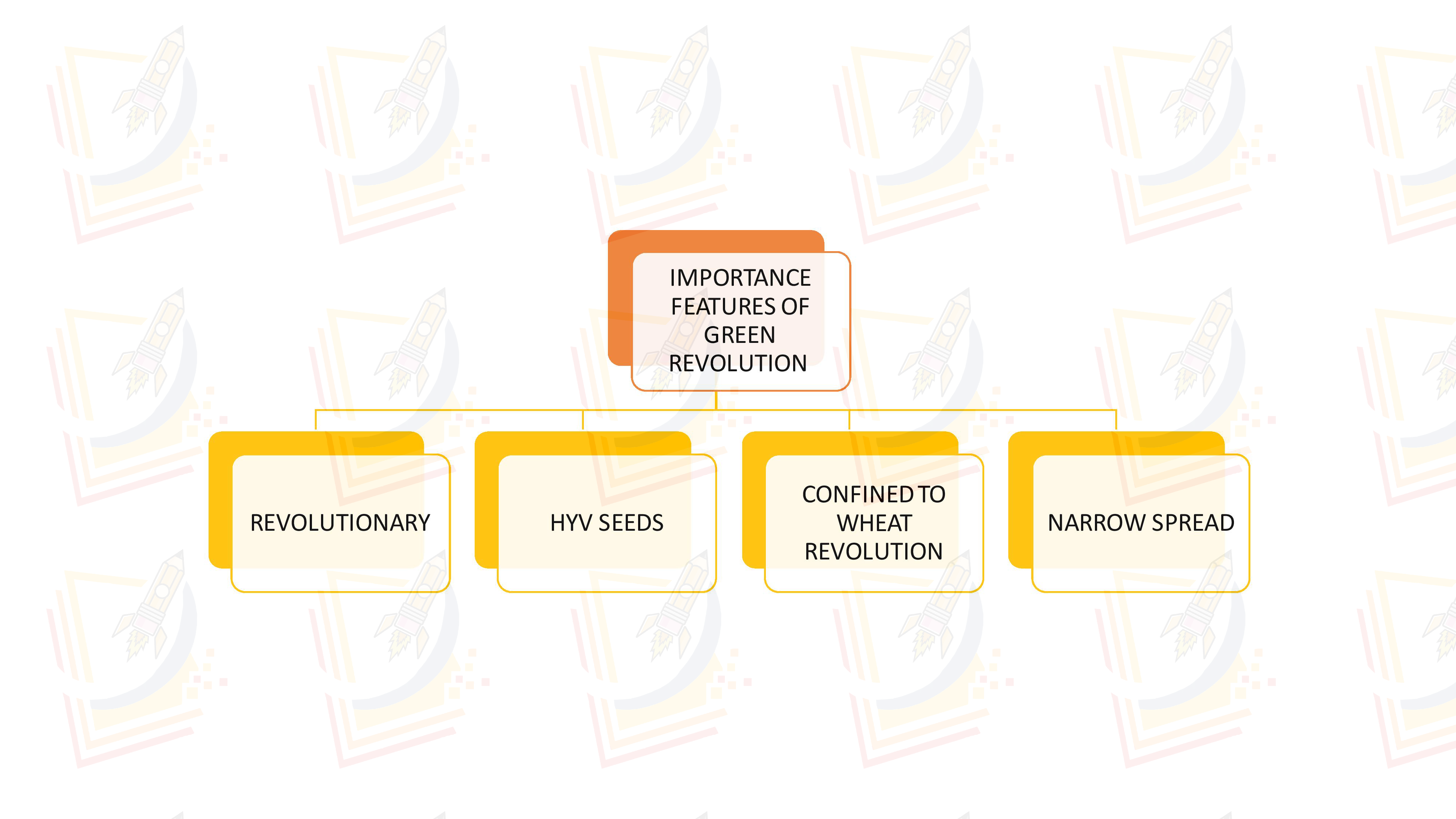INTRODUCTION
The new agricultural strategy was adopted in India during the Third Plan, i.e., during 1960s. As suggested by the team of experts of the Ford Foundation in its report “India’s Crisis of Food and Steps to Meet it” in 1959 the Government decided to shift the strategy followed in agricultural sector of the country.
NEW AGRICULTURE STRATEGY : GREEN REVOLUTION
Green Revolution had brought the great change in the Indian agriculture. Before green revolution the India used traditional agriculture practice but now modern technology are used in agriculture. The modern inputs like fertilizers, credit marketing facilities etc.
ACCORDING TO YEARS
- IN 1960 — the seven states and seven districts were selected and government introduced a pilot project known as Intensive Area Development Programmers (IADP)
- IN 1965 — the 144 district (out of 325) were selected for intensive cultivation.
- IN 1966 — The India adopted HIGH YIELDING VARIETIES PROGRAMMER (HYVP) for the first time.
- IN MID 1995-96 — the total area covered by HYVP is 78.0 million.
IMPORTANCE FEATURES OF GREEN REVOLUTION
The various features of green revolution are as follow

- REVOLUTIONARY :- The green Revolution are based on revolution in character it implies new technology, new ideas, new inputs like HVY seeds, fertilizers, irrigation water, pesticides etc.
- HYV SEEDS :- The important strategy followed in green revolution is application of HYV (high yielding seeds) . Most the HYV seeds are used where sufficient supply of water is there. These seeds also require four to ten time more of fertilizers than that of traditional variety.
- CONFINED TO WHEAT REVOLUTION :- Green revolution has been largely confined to Wheat crop neglecting the other crops. Green revolution was first introduced to wheat cultivation in those areas where sample quantity of water was available throughout the year through irrigation. Presently 90 per cent of land engaged in wheat cultivation is benefitted from this new agricultural strategy.
- NARROW SPREAD :- The area covered through green revolution was initially very narrow as it was very much confined to Punjab, Haryana and Western Uttar Pradesh only. It is only in recent years that coverage of green revolution is gradually being extended to other states like West Bengal, Assam, Kerala and other southern states.
ARGUMENT IN FAVOR OF NEW STRATEGY IN INDIA
The introduction of new agricultural strategy in India has certain argument in favor
FIRSTLY, India brings a vast agricultural country the adoption of intensive approach is the only way to make a breakthrough in the agricultural sector within the shortest possible time.
SECONDLY, considering the food crisis faced by the country during 1960s it was quite necessary to adopt this new strategy for meeting the growing requirement of food in our country.
THIRDLY, the HYVP programmed has been able to raise the agricultural productivity significantly.
FOURTHLY, the agricultural inputs required for the adoption of new strategy is scarce thus it would be quite beneficial to adopt this strategy in a selective way only on some promising areas so as to reap maximum benefit from intensive cultivation.
FIFTHLY, Reaping a good yield through HYVP would induce the other farmers to adopt this new technique. Thus due to its spread effect the overall productivity of Indian agriculture would rise.
LASTLY, As the increased production of food through HYVP would reduce food imports and thus release scarce foreign exchange for other purposes.
FACTORS RESPONSIBLE FOR GREEN REVOLUTION
Adoption of HYP seeds since mid-sixties has resulted in significant increase in food grain production. The government made various arrangements for ensured supply of quality seeds.

